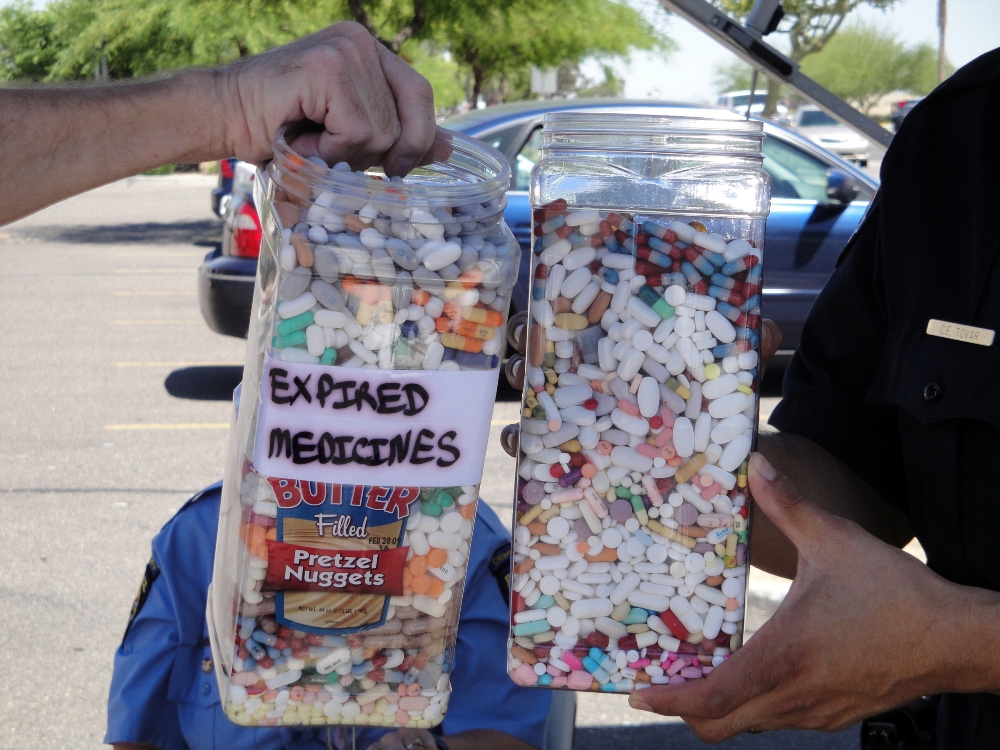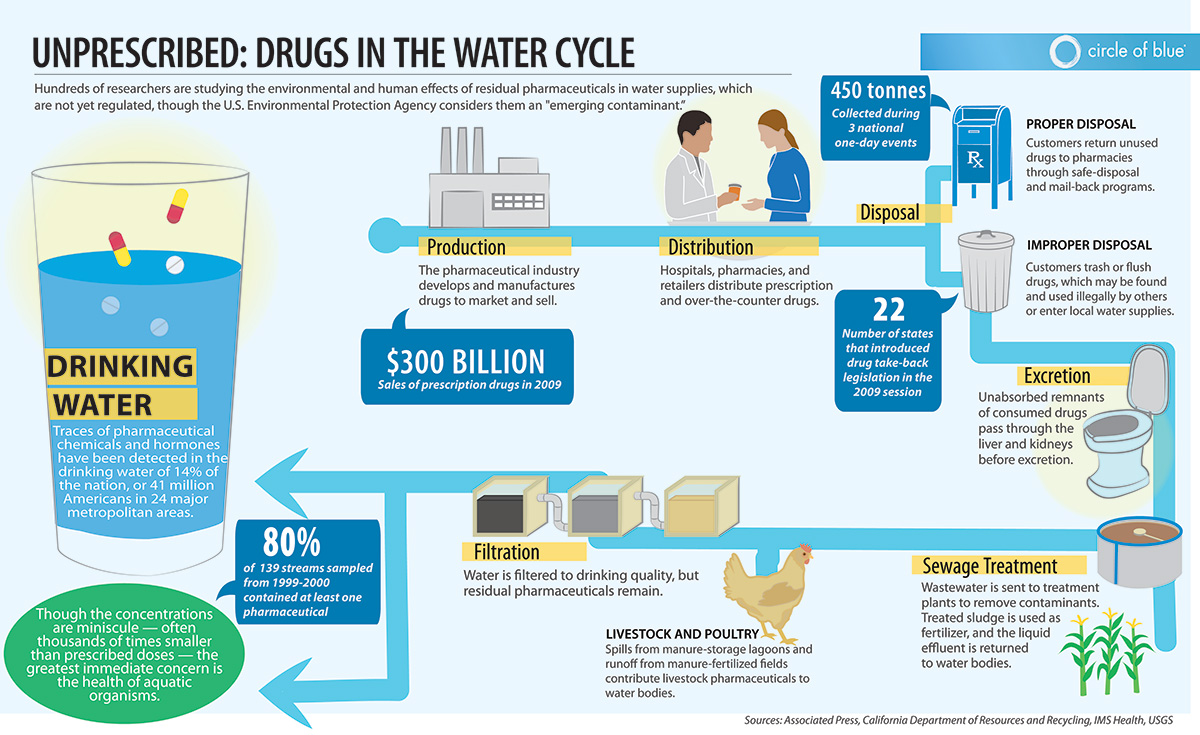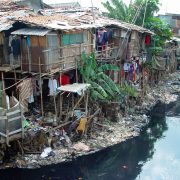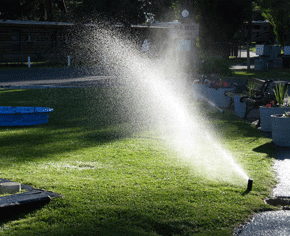New Federal Rules Expand Ways to Keep Prescription Drugs out of Waterways
Pharmacies, hospitals, and distributors are now authorized to collect narcotics, opiates, and other “controlled” drugs.

By Brett Walton
Circle of Blue
Completing a process initiated four years ago, the U.S. Drug Enforcement Administration published new rules Tuesday that will make the safe disposal of surplus prescription medications easier for consumers.
Retail pharmacies, hospitals with pharmacies, and drug manufacturers will now be allowed to collect and destroy the more than 160 chemical compounds defined by the federal government as “controlled substances.”
Before, controlled substances – which, to list just two common examples, include Percocet, a narcotic, and Ritalin, a stimulant – could be handed only to law enforcement officials. Starting October 9, controlled substances can be collected in the same manner as cold medications, ibuprofen, and other over-the-counter drugs, which have no disposal restrictions.
The goals of the new rules are several: rid medicine cabinets of old pills, prevent accidental poisonings and household drug abuse, and avoid contaminating soils and waterways with the residues of a medicated society.
“It’s environmentally unsafe to continue the practices we’re doing,” DEA special agent Matt Barden told Circle of Blue.
–Matt Barden, special agent
U.S. Drug Enforcement Administration
Those unsafe practices involve tossing unwanted drugs in the garbage or flushing them down the toilet, pathways to a local river or lake. Between 10 percent and 40 percent of retail and prescription drugs are not used, according to industry estimates and consumer surveys. Some 3.9 billion prescriptions were filled at U.S. pharmacies in 2013, a number that does not include over-the-counter or mail-order sales
Of the amount of drugs not used, very few are collected for safe disposal. A 2012 study in Wisconsin estimated a collection rate of just 2 percent.
Numerous studies by academic and federal scientists have shown tiny but detectable levels of pharmaceuticals in the nation’s waterways – pharmaceuticals that most sewage treatment plants are not equipped to remove.
A significant research question for freshwater ecologists is the undesirable effects these new contaminants have on fish, frogs, and humans and on the rise of drug-resistant microbes. Scientists have already seen examples of abnormal sexual development in frogs, such as males with ovaries, and fish that are indifferent to mating, though no detrimental changes in human physiology have been documented.
Redirecting the Flow of Drugs
Improper disposal is one of many sources of pharmaceuticals in waterways. A portion of an ingested medicine is not metabolized and leaves the body in urine and feces. The livestock industry, the largest consumer of pharmaceutical products, plumps animals with hormones and guards herds against disease outbreaks with a moat of pills. Even soaps, lotions, and shampoos contribute trace amounts of chemicals when they are washed off skin and hair.
Of all these sources, improper disposal is assumed to be the smallest, according to U.S. Environmental Protection Agency scientists, but an exact figure is not known. The estimated range is from a few percent to as much as 20 percent.
Even so, collecting and destroying unused medications is a relatively simple way to shut down one pathway. Collected pills are destroyed by fire in an incinerator.
Advocates for clean water and product safety cheered the DEA’s expansion of pharmaceutical collection programs.
“The new rules make it much simpler and much easier for individuals to dispose of their medications,” Chris Angel told Circle of Blue. Angel is the co-founder of the Yellow Jug program, a network of drug disposal sites in Illinois, Indiana, Michigan, and Wisconsin.
One of the lingering questions is how to pay for these programs. The DEA rules come with no federal funding, and local governments and pharmacies are sometimes unwilling to foot the bill, though it is relatively small.
The cost of running a collection program varies. The Yellow Jug program costs pharmacies $US 25 per month, Angel said, asserting that ideally the costs should be split between customers, pharmacies, and drug manufacturers.
Data from Wisconsin shows that the total cost for running the state’s 155 permanent drug collection sites and an unknown number of single-day events was $US 428,000 in 2011.
Other groups argue that the burden of payment should be on the drug manufacturers. Local governments in California and Washington state have passed laws that force the industry to pay. Both of those laws have been challenged in court by pharmaceutical trade groups.
“Retailers will be more willing to collect and provide the convenience to customers if the cost is covered,” Scott Cassel, executive director of the Product Stewardship Institute, a producer-pays advocate, told Circle of Blue.
While providing new opportunities, the DEA rule also brings an end to another popular means of disposal.
Since 2010, the DEA has sponsored eight national drug take-back events, held twice annually in partnership with local law enforcement agencies. Though nearly every collection set a new record for the mass of drugs received, the DEA will no longer sponsor the events, claiming that they were a stopgap measure until the new collection rules were in place.
The final DEA take-back event is September 27.
Brett writes about agriculture, energy, infrastructure, and the politics and economics of water in the United States. He also writes the Federal Water Tap, Circle of Blue’s weekly digest of U.S. government water news. He is the winner of two Society of Environmental Journalists reporting awards, one of the top honors in American environmental journalism: first place for explanatory reporting for a series on septic system pollution in the United States(2016) and third place for beat reporting in a small market (2014). He received the Sierra Club’s Distinguished Service Award in 2018. Brett lives in Seattle, where he hikes the mountains and bakes pies. Contact Brett Walton












Thanks for helping get the word out! Proper disposal of Rx-Waste helps keep our water clean and our communities safe.
http://www.securedrugdisposal.org
http://www.greatlakescleanwater.org